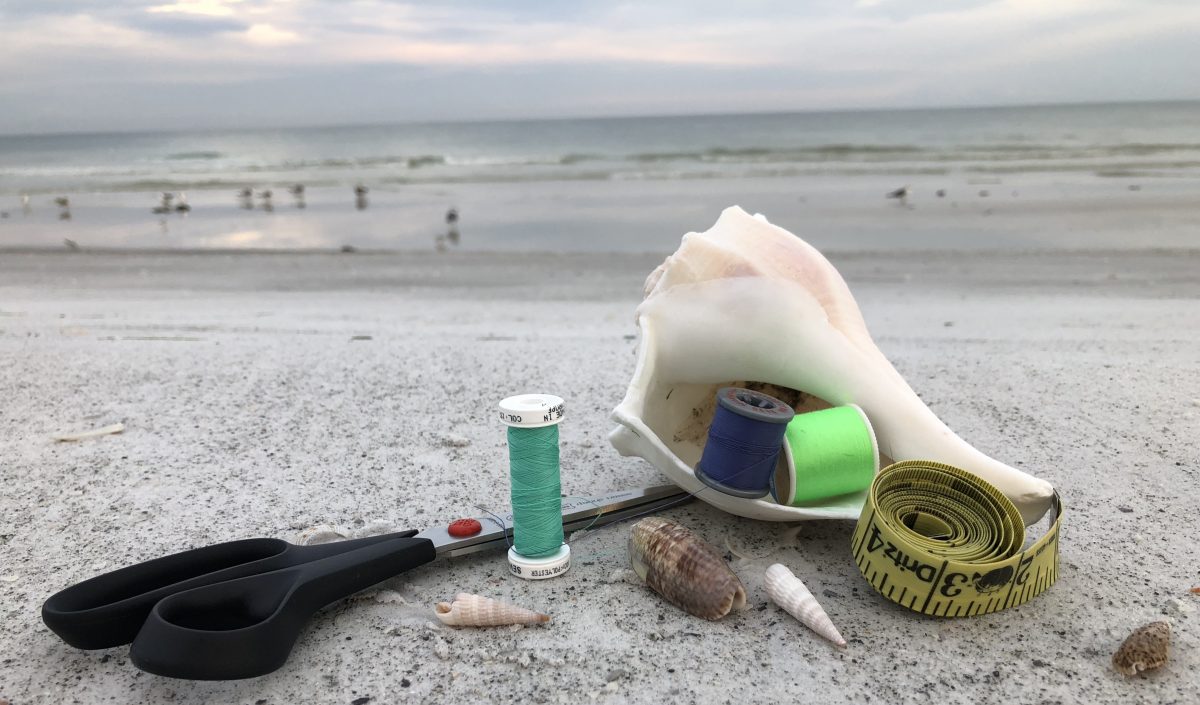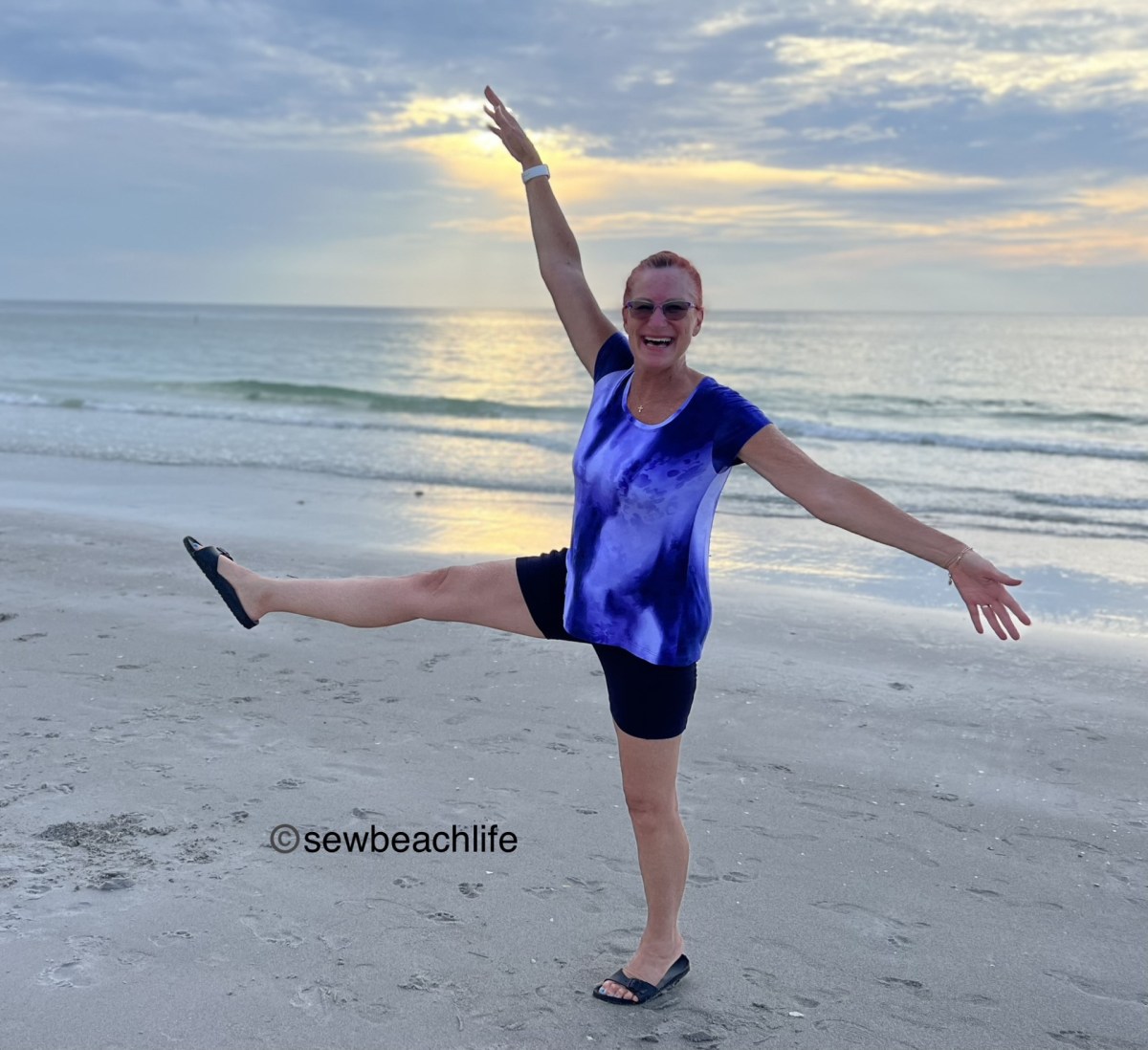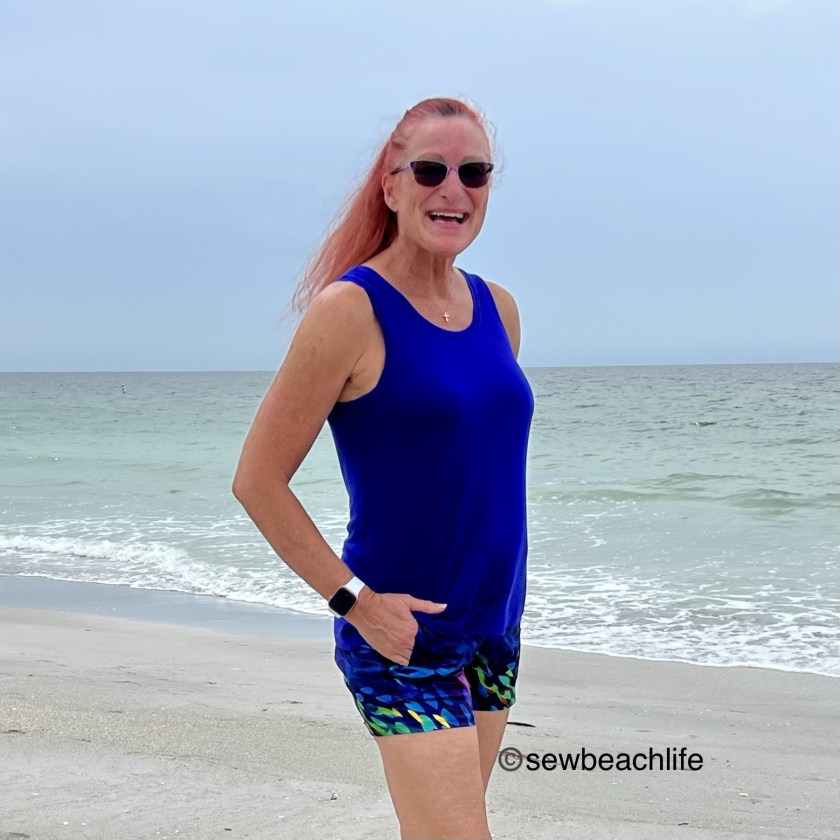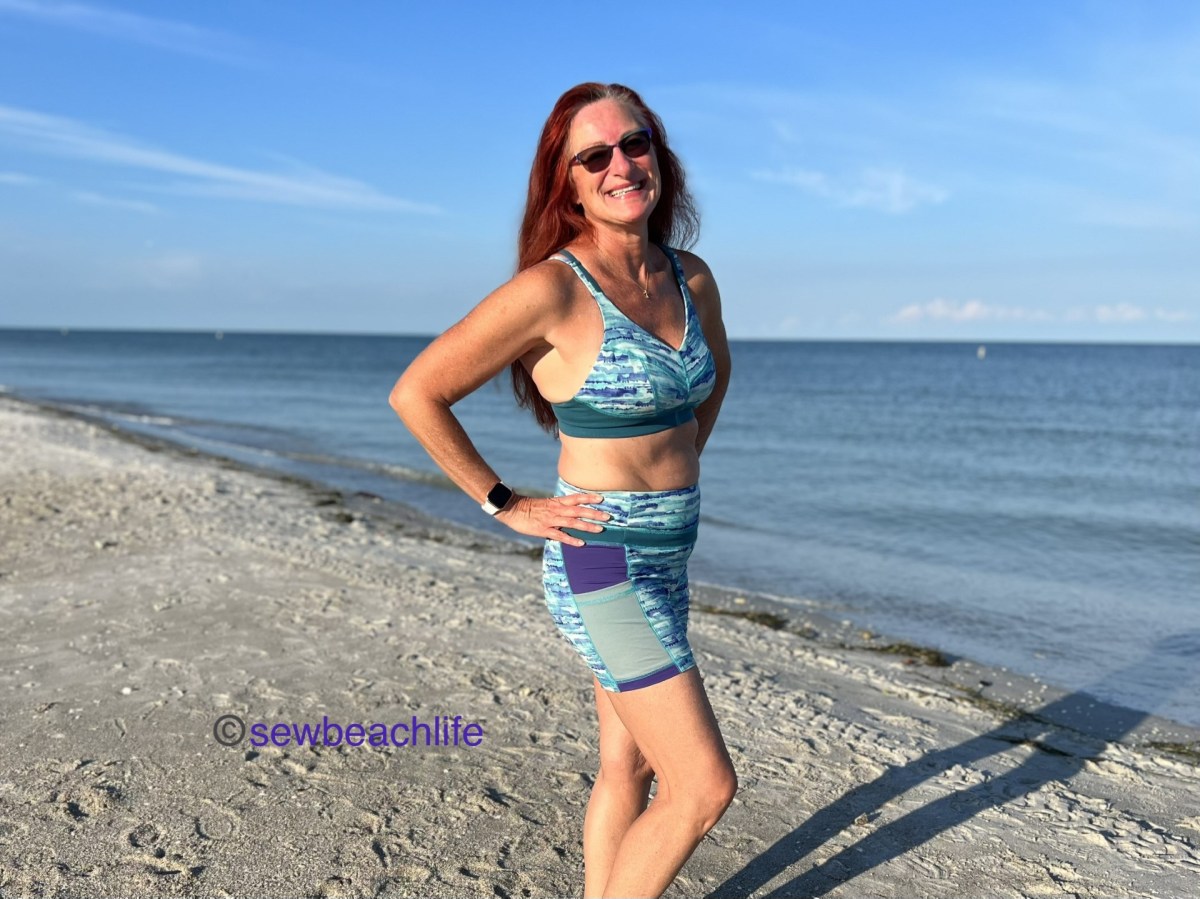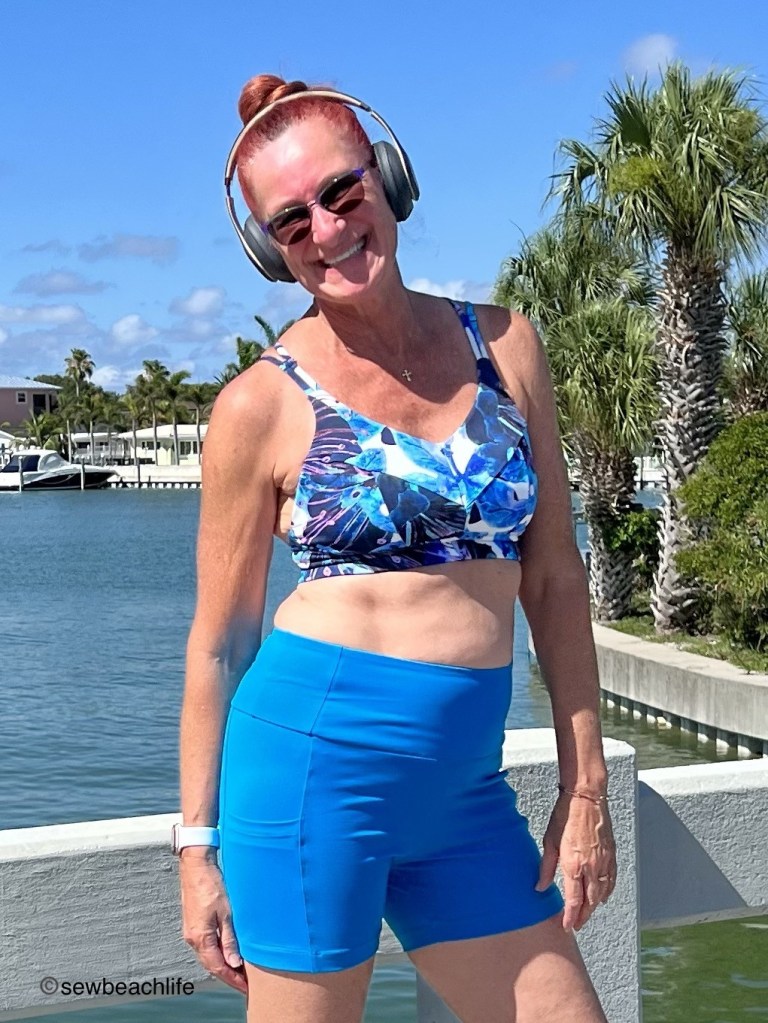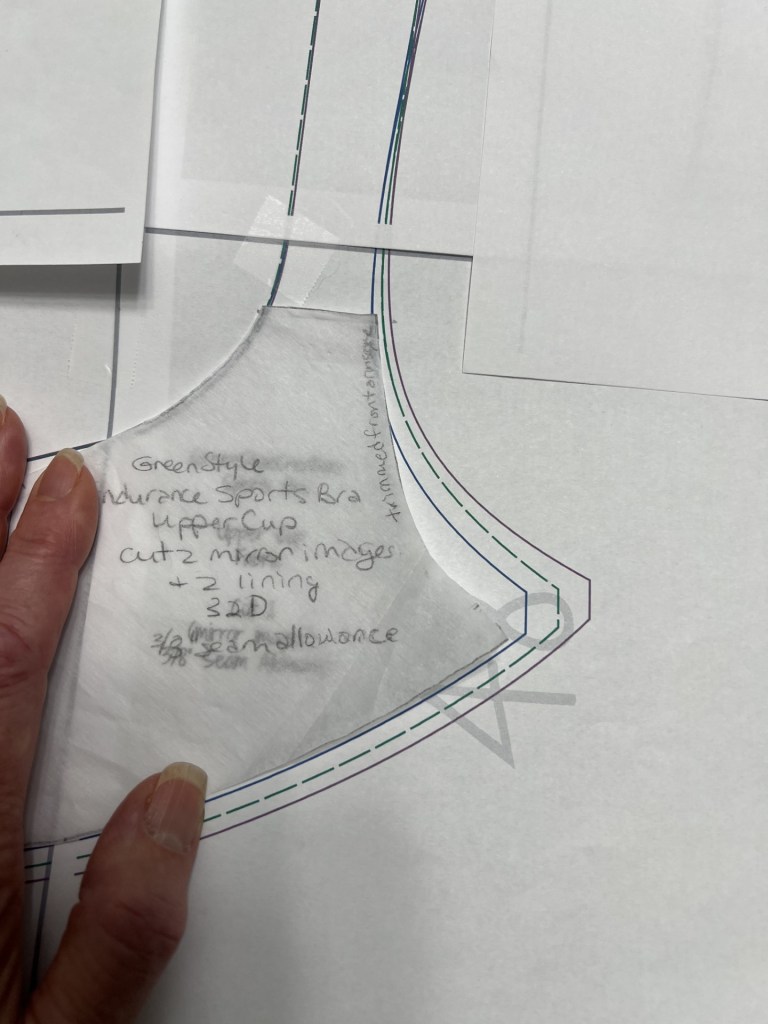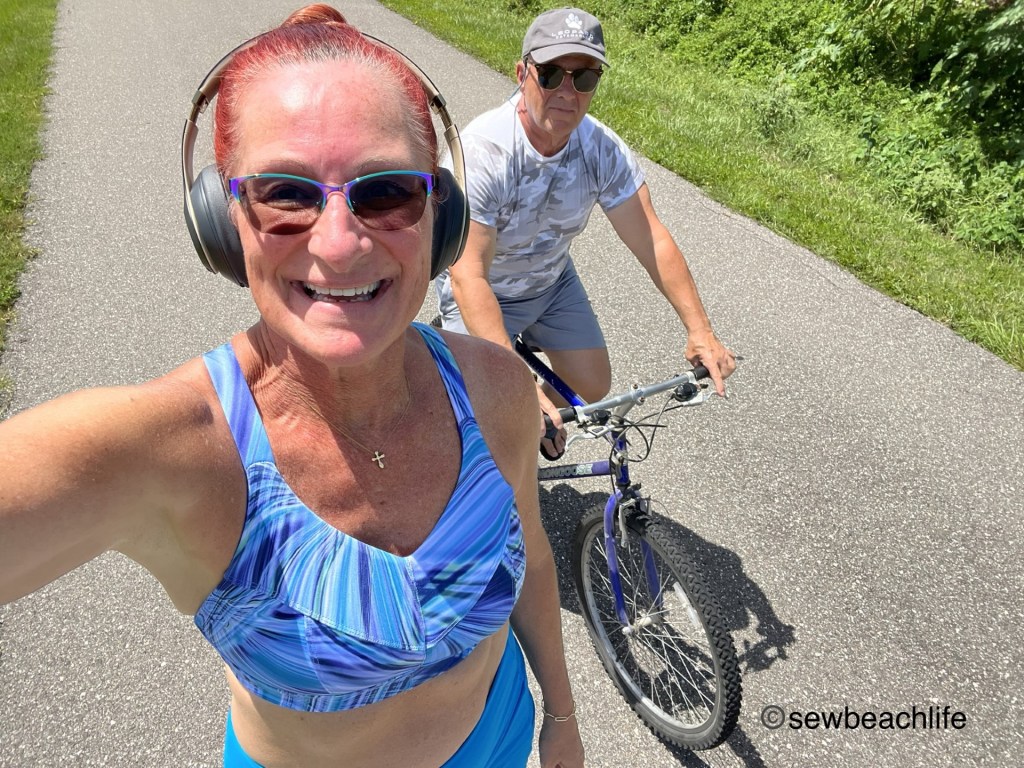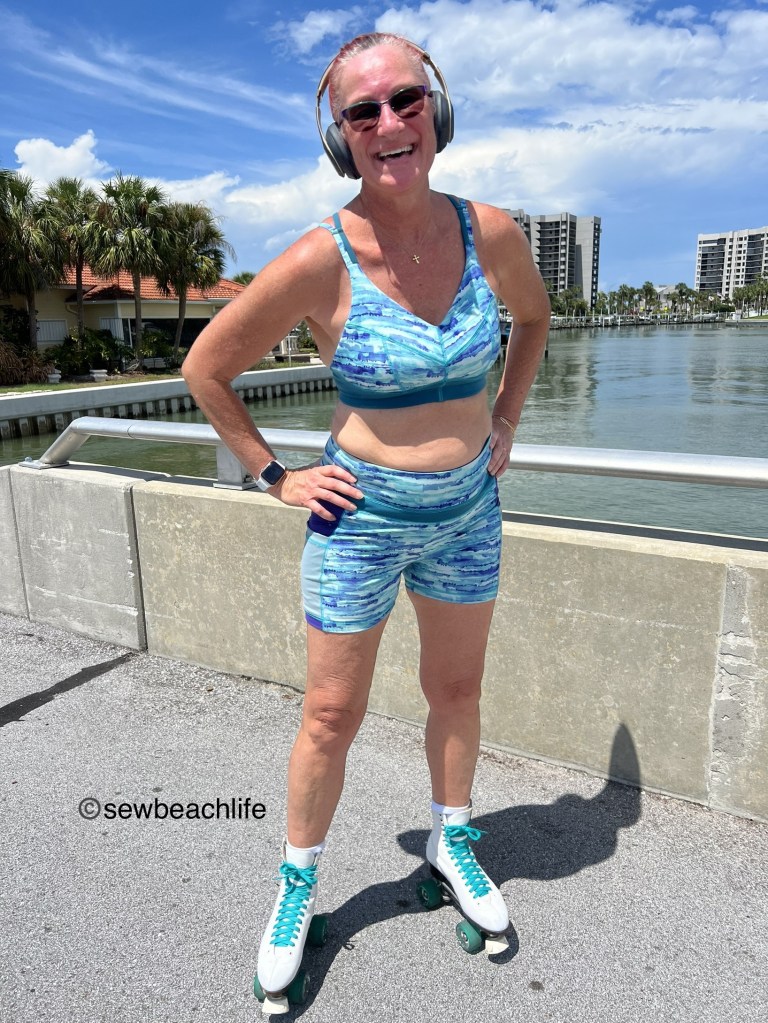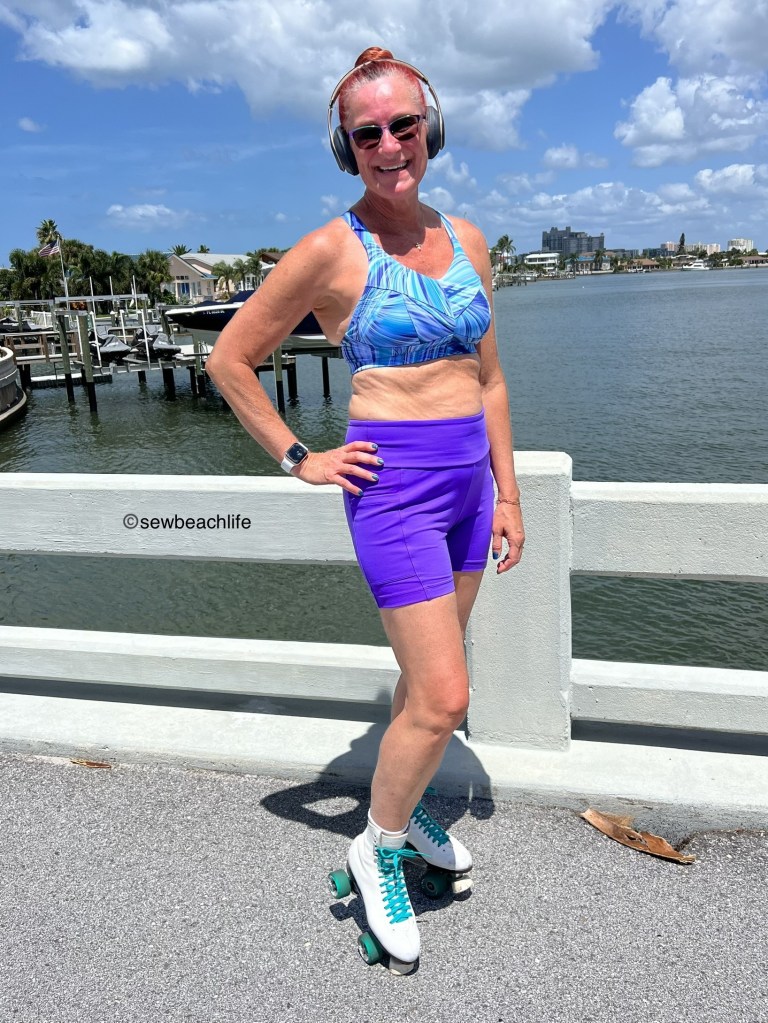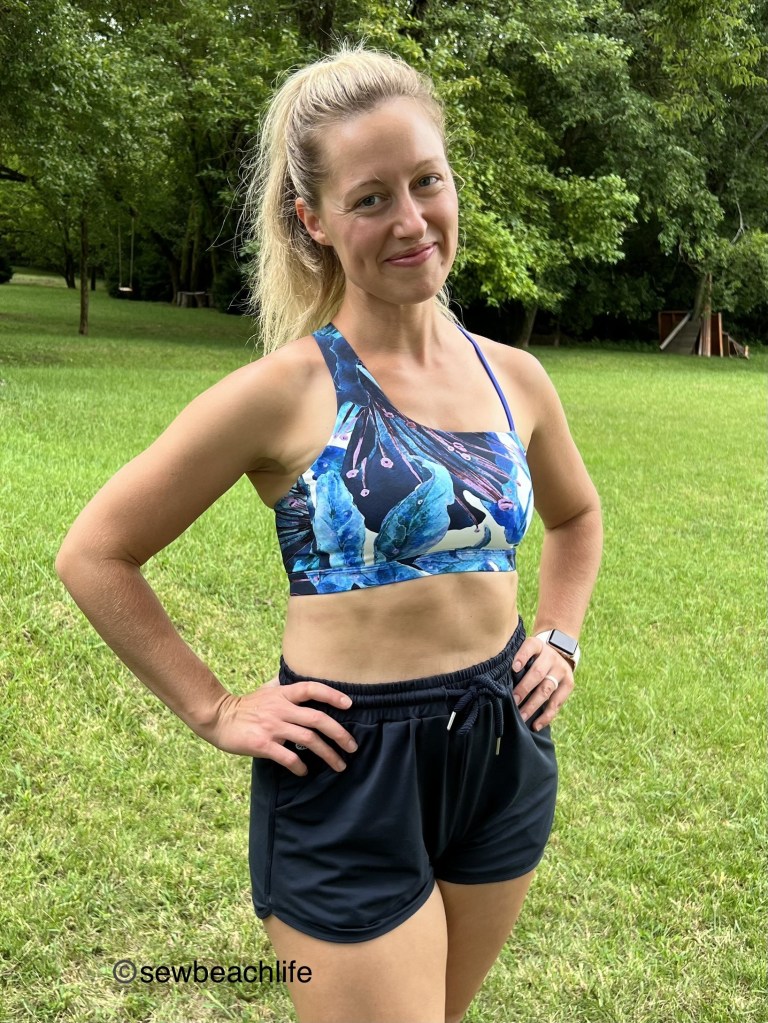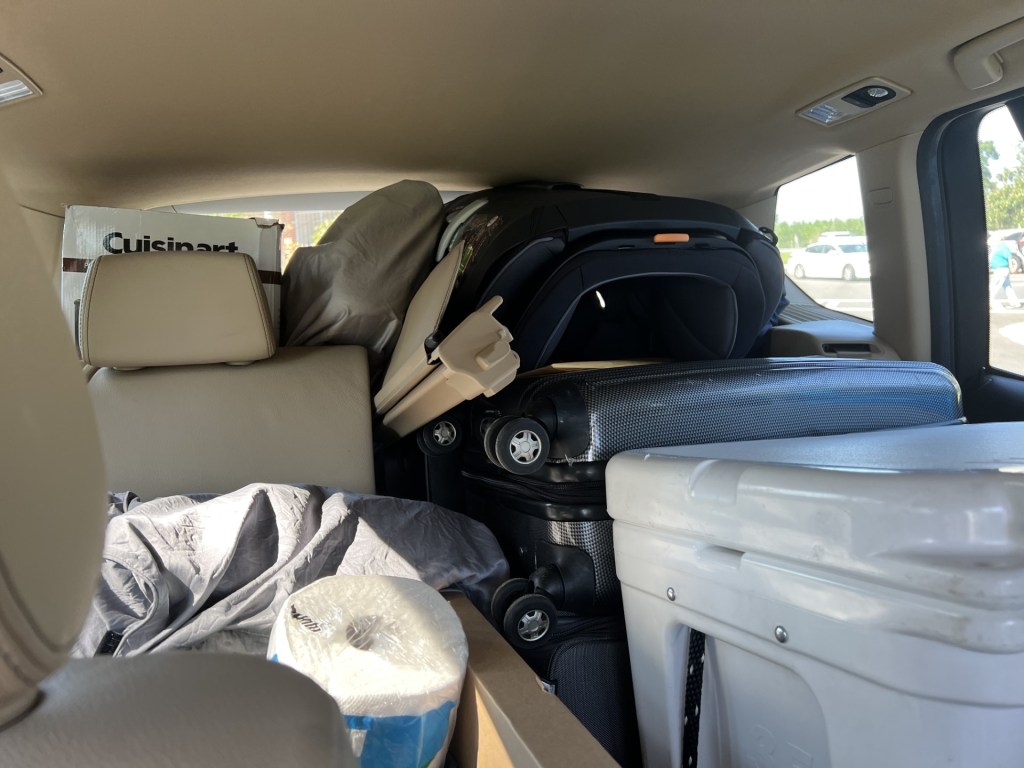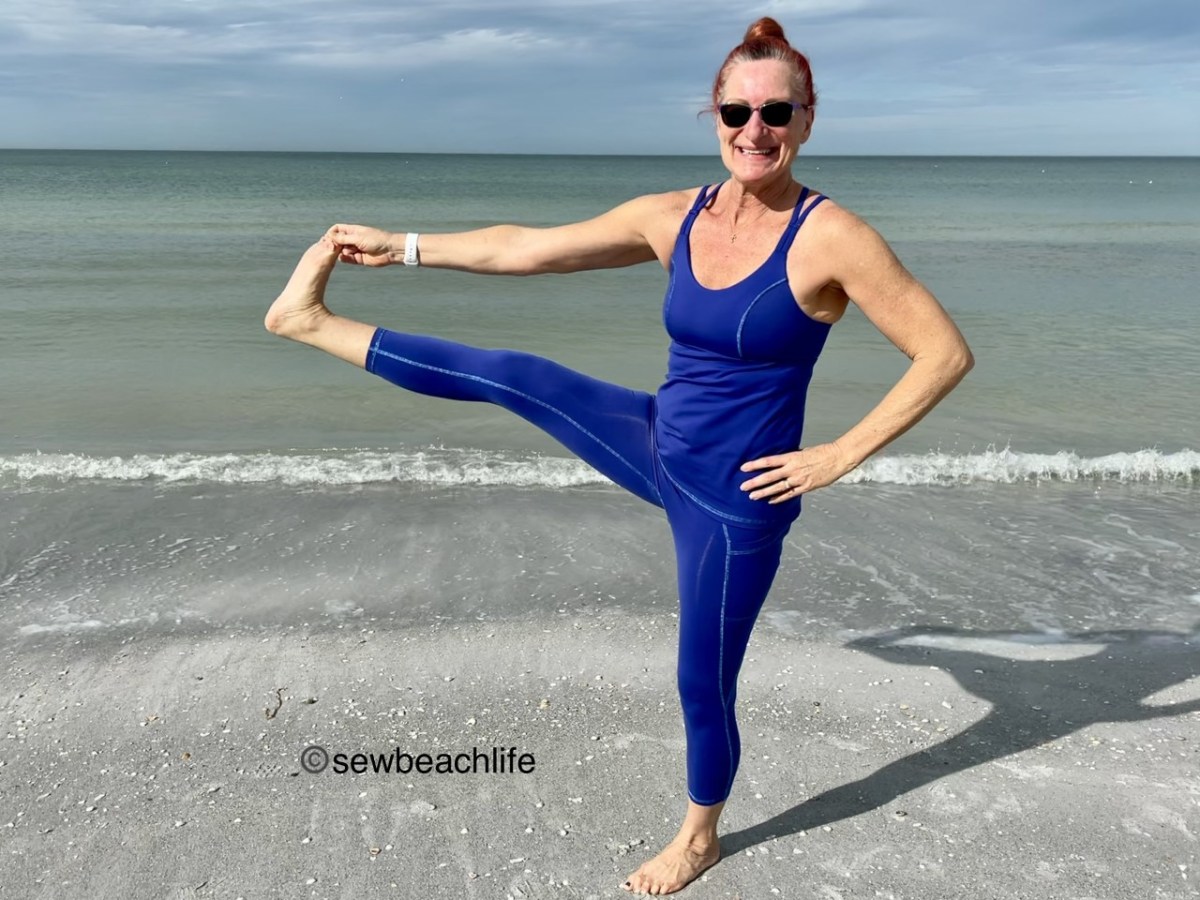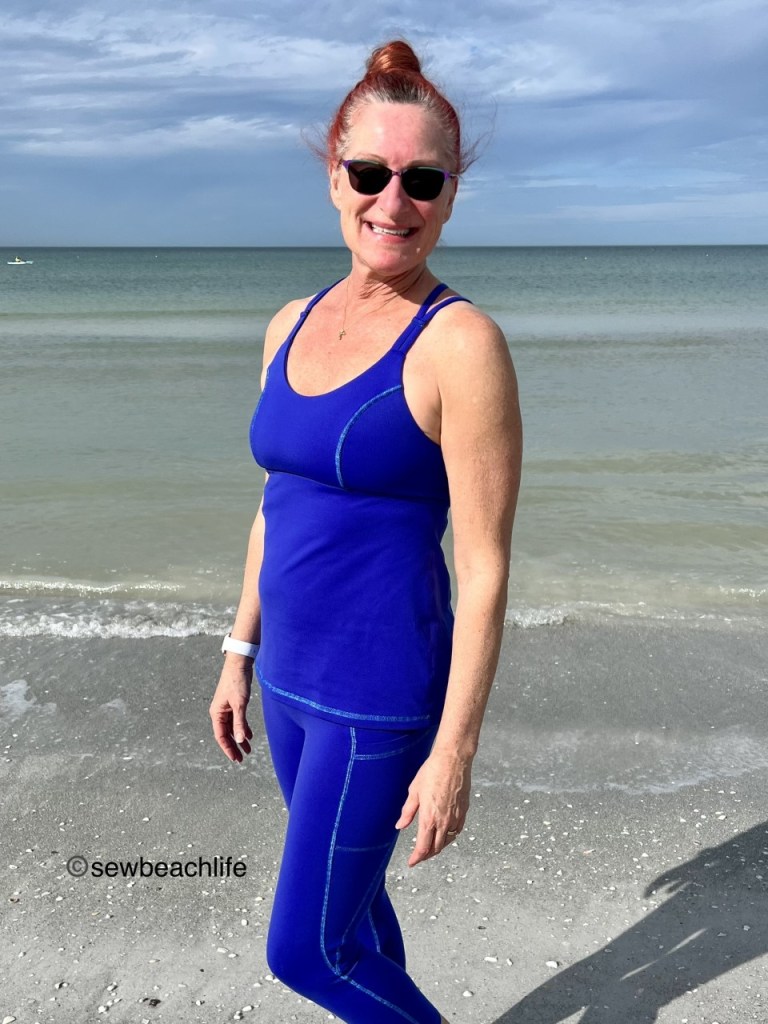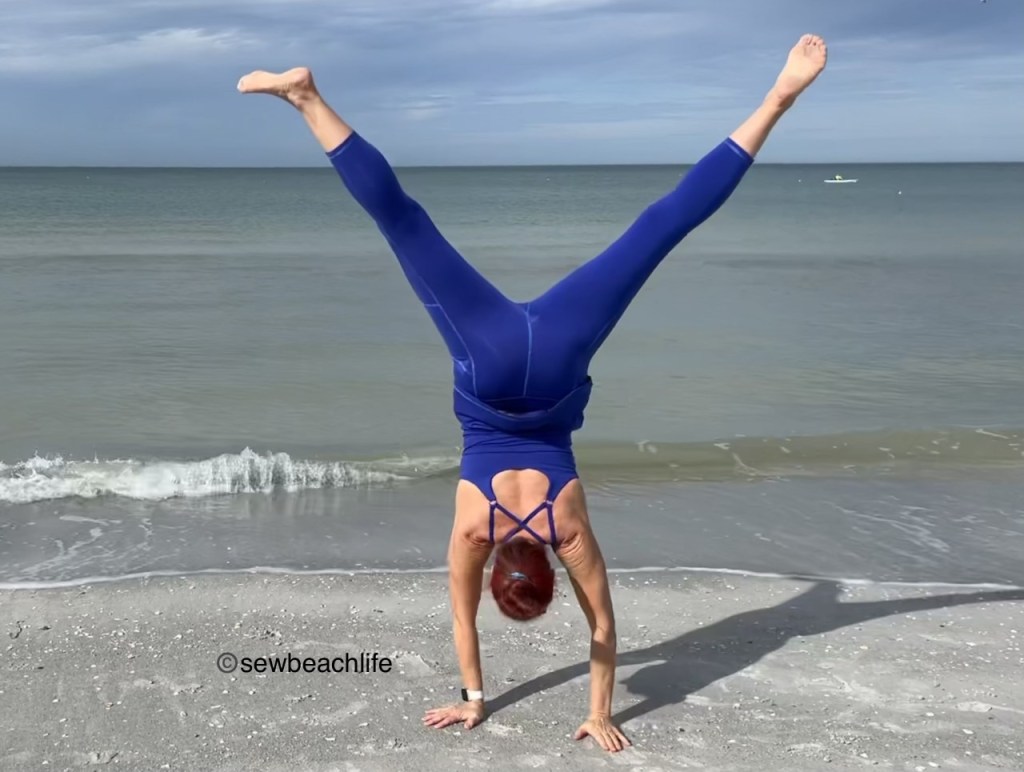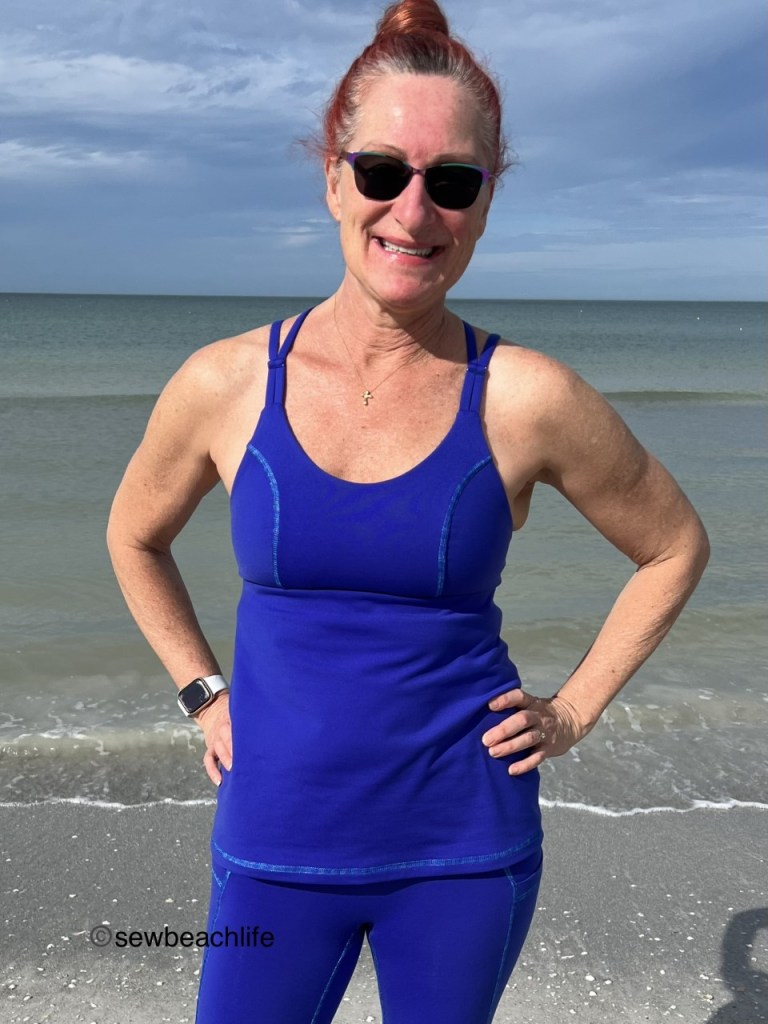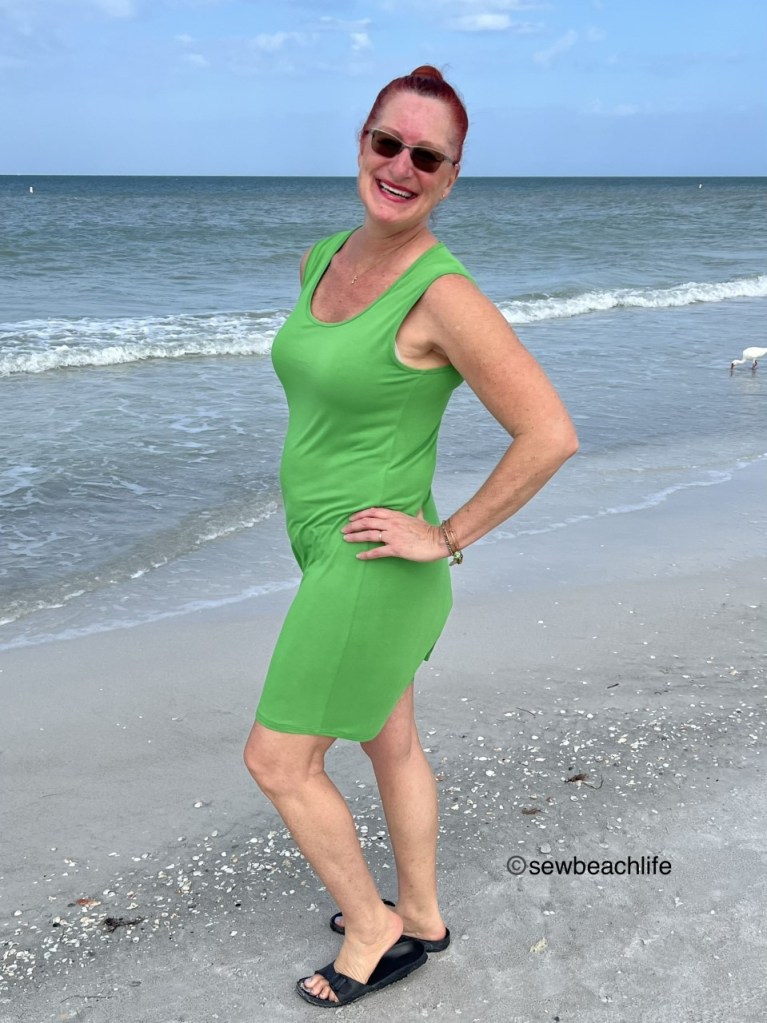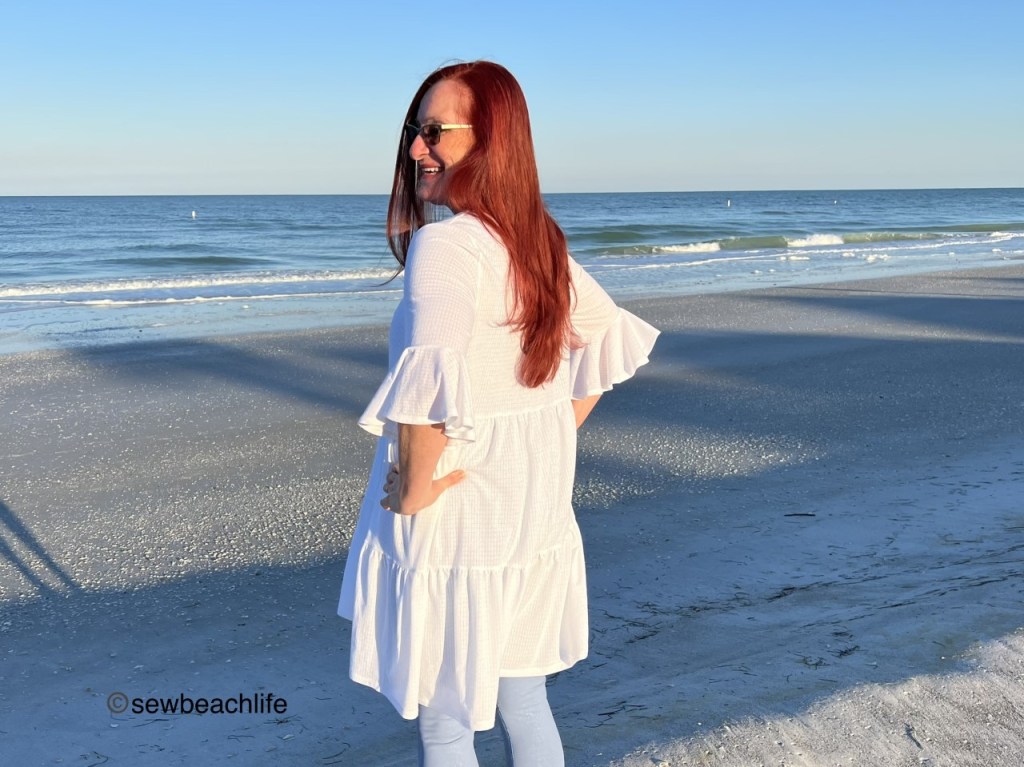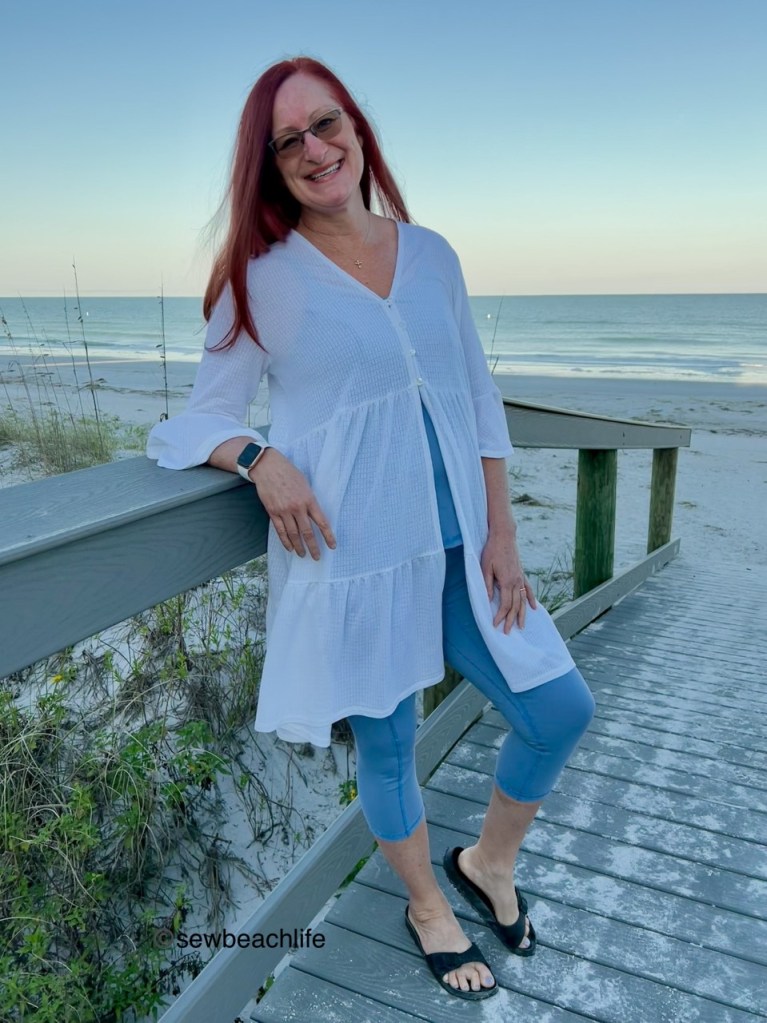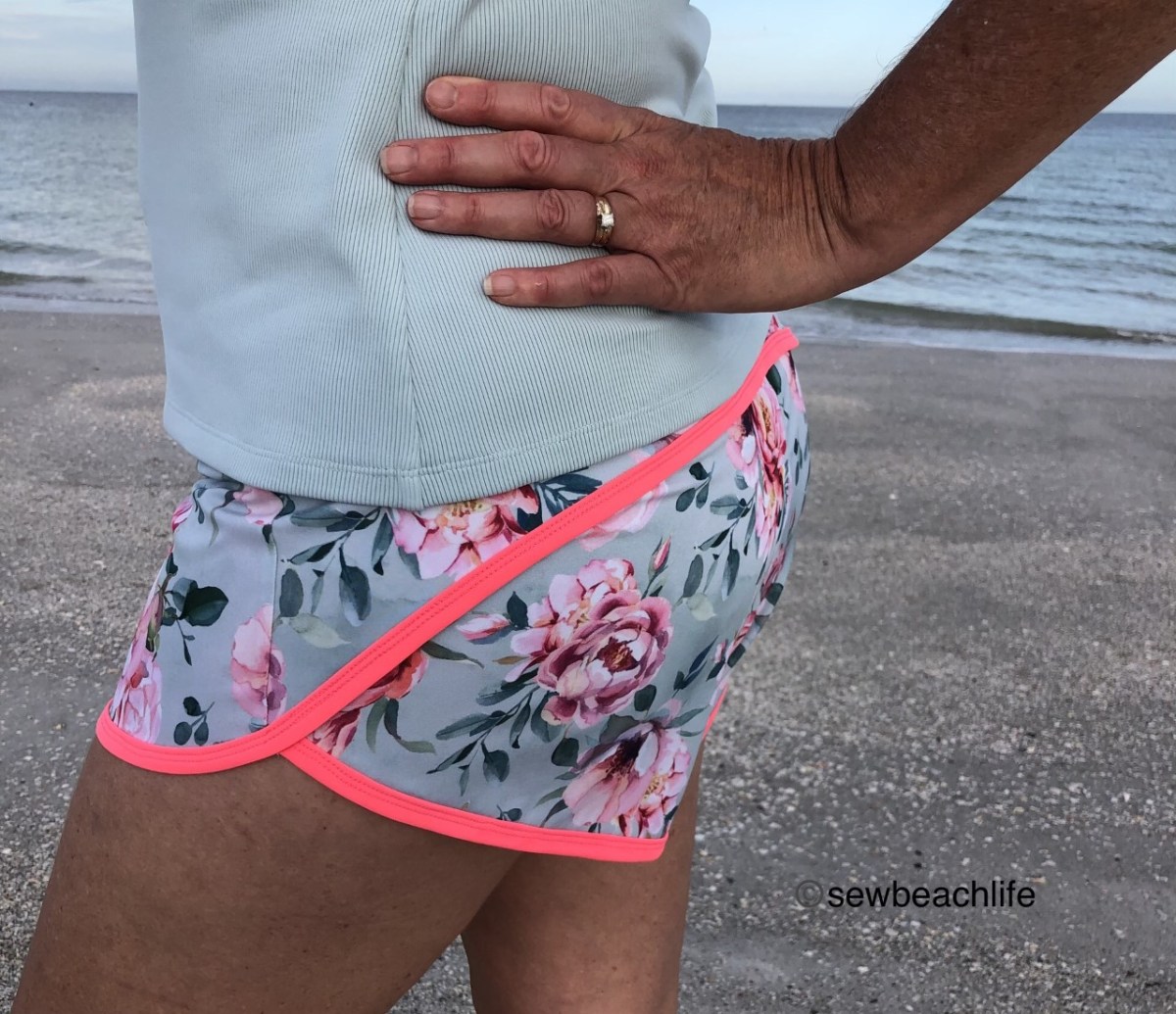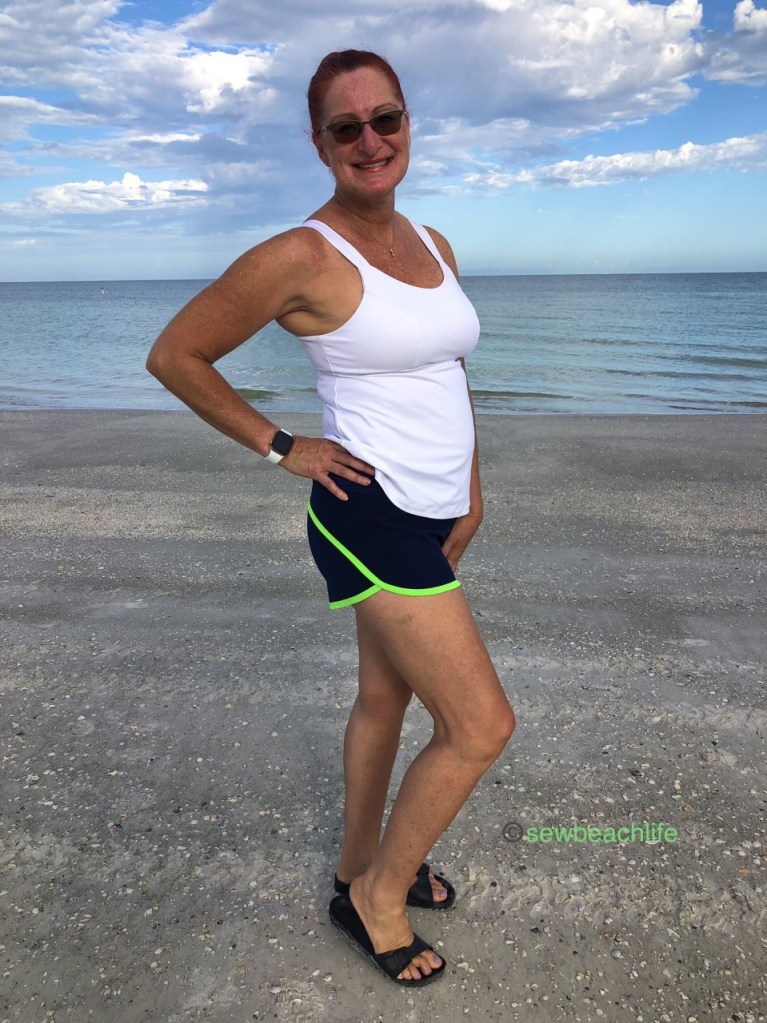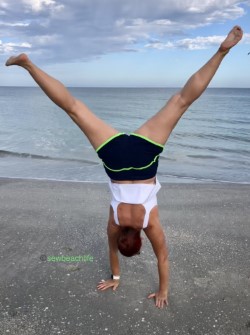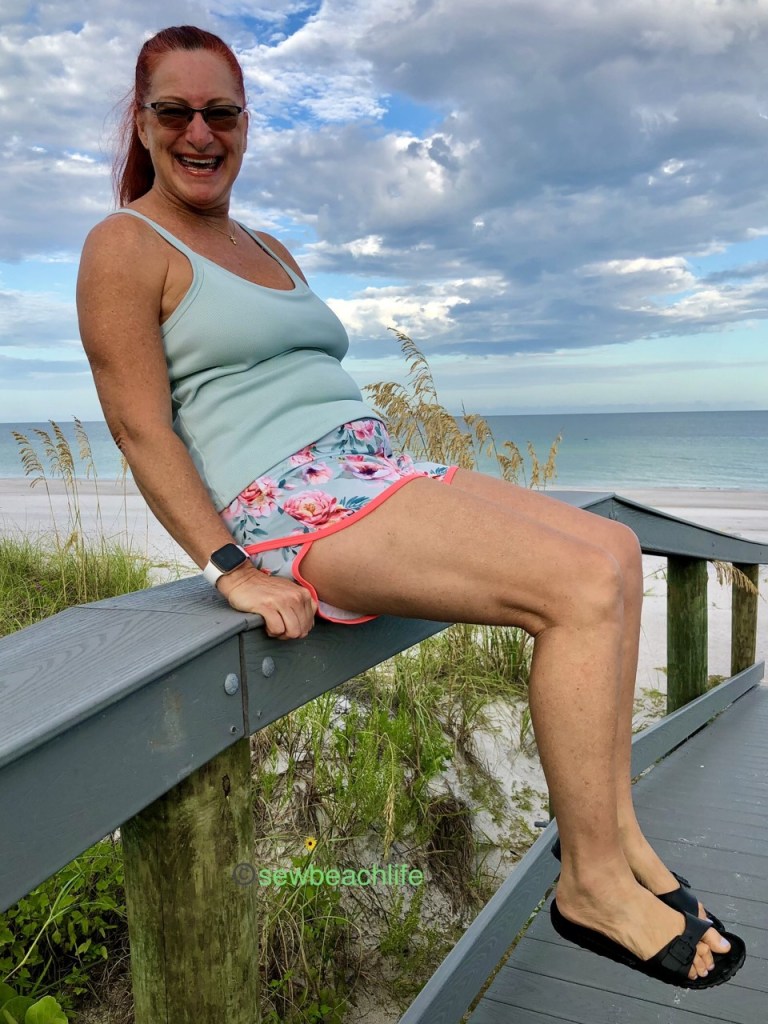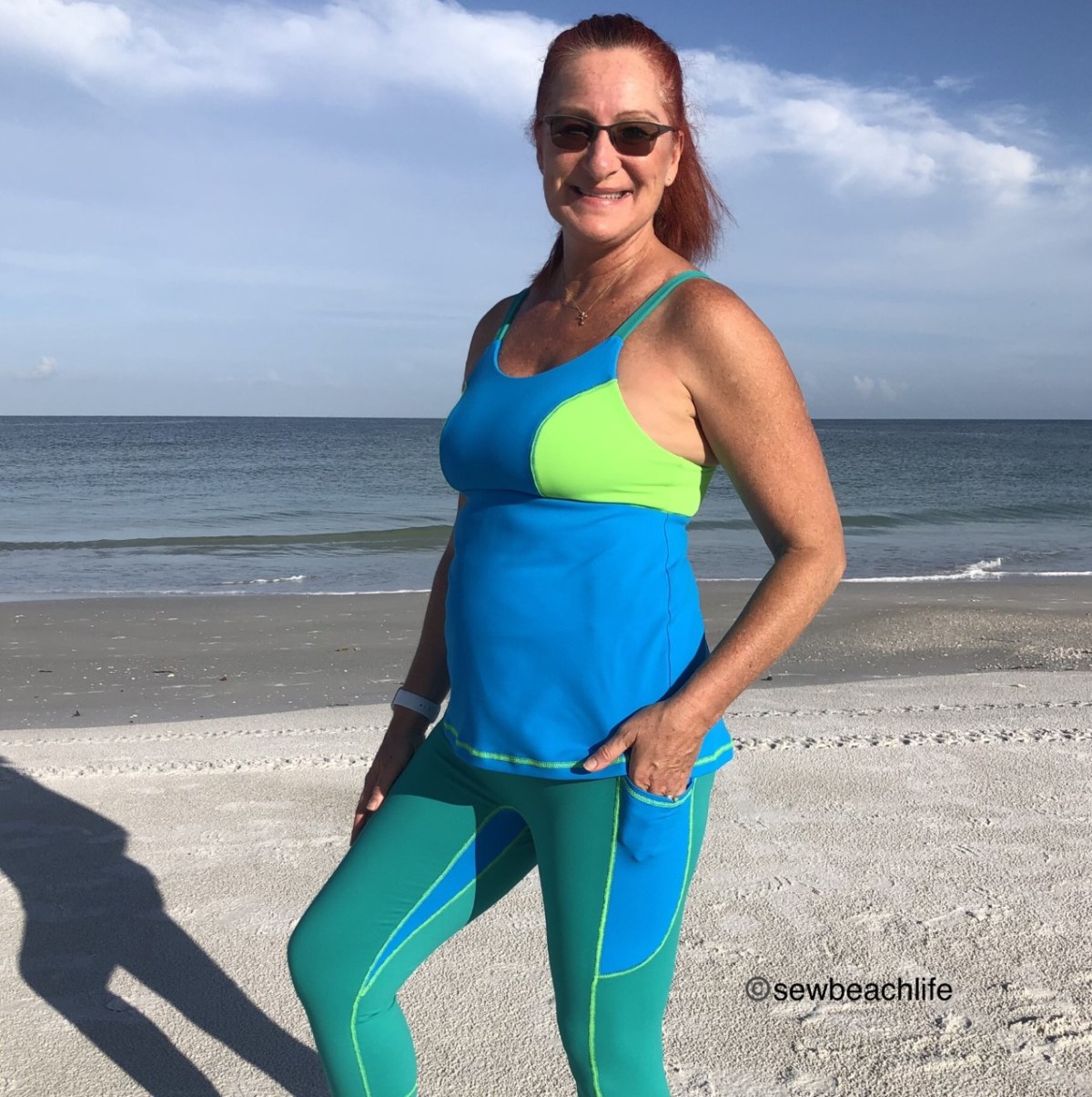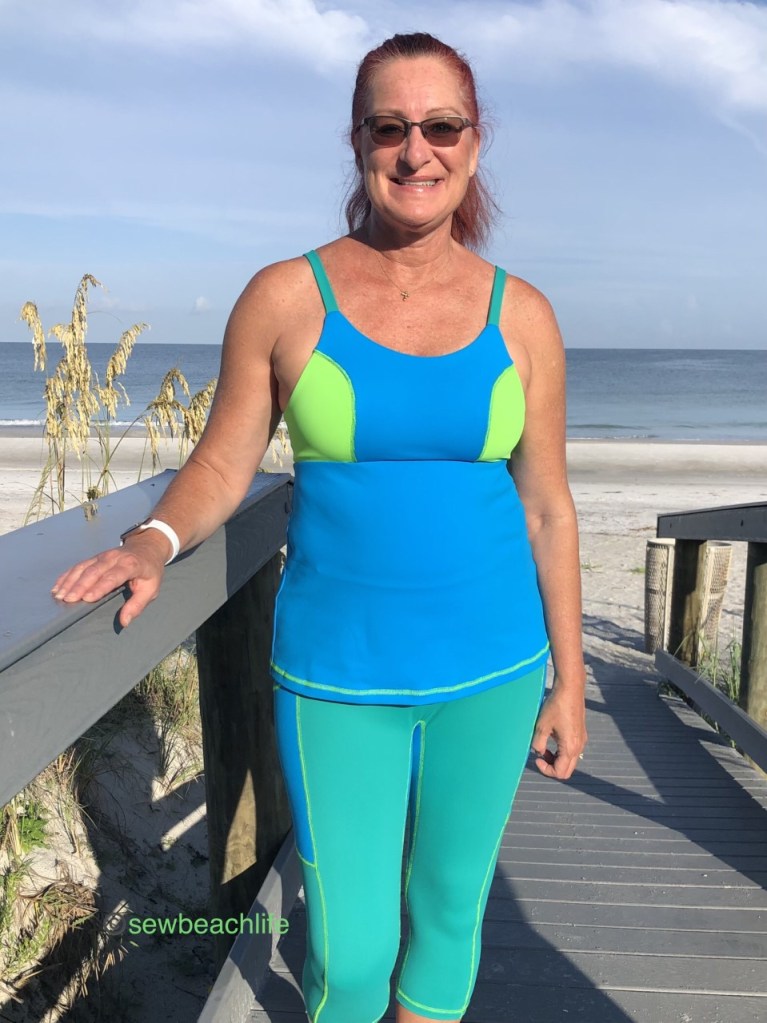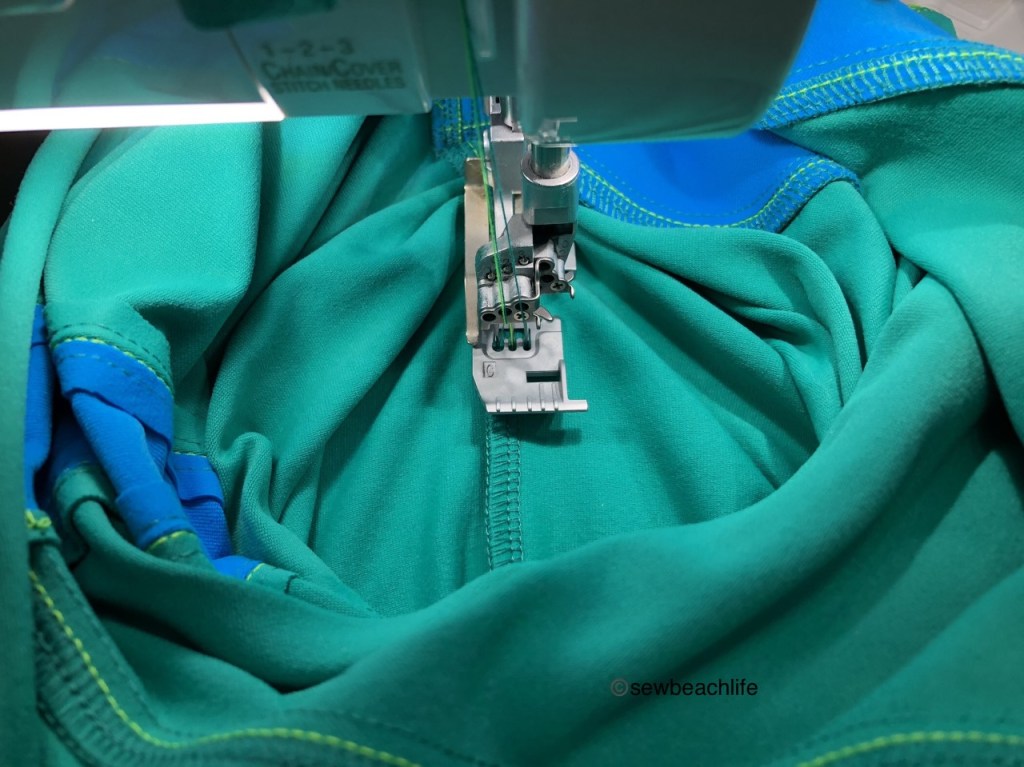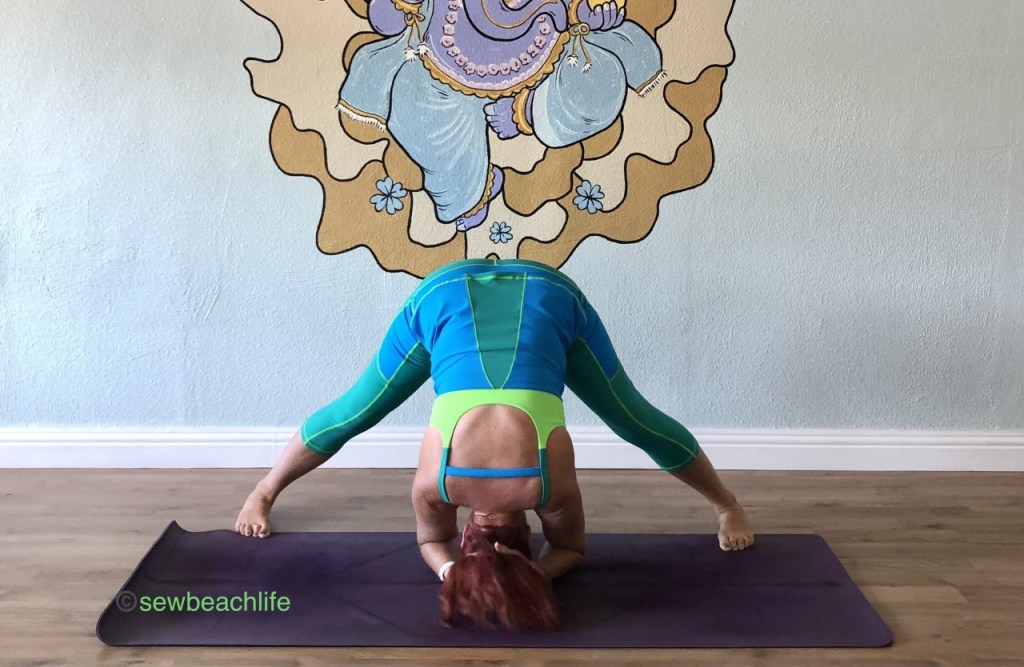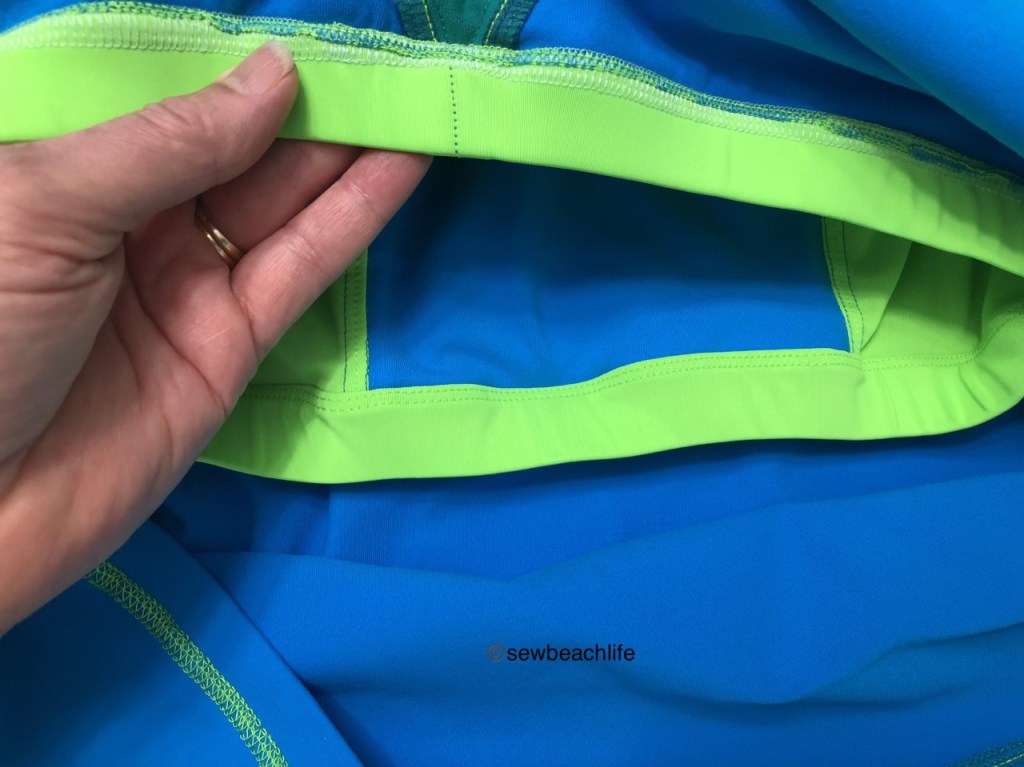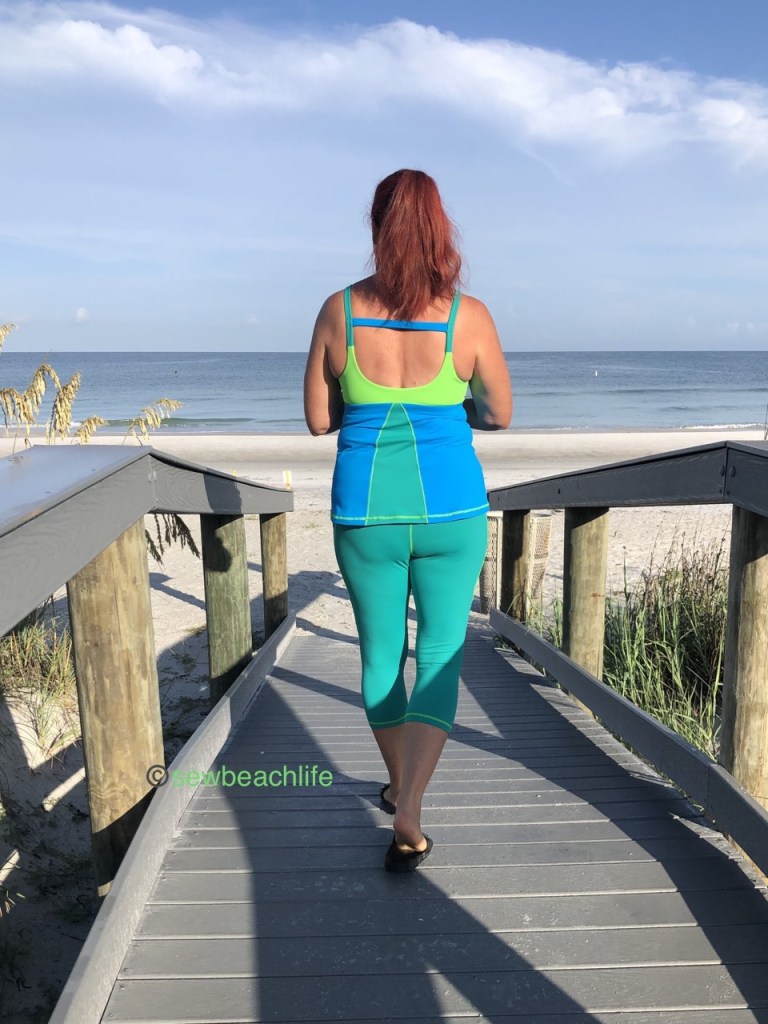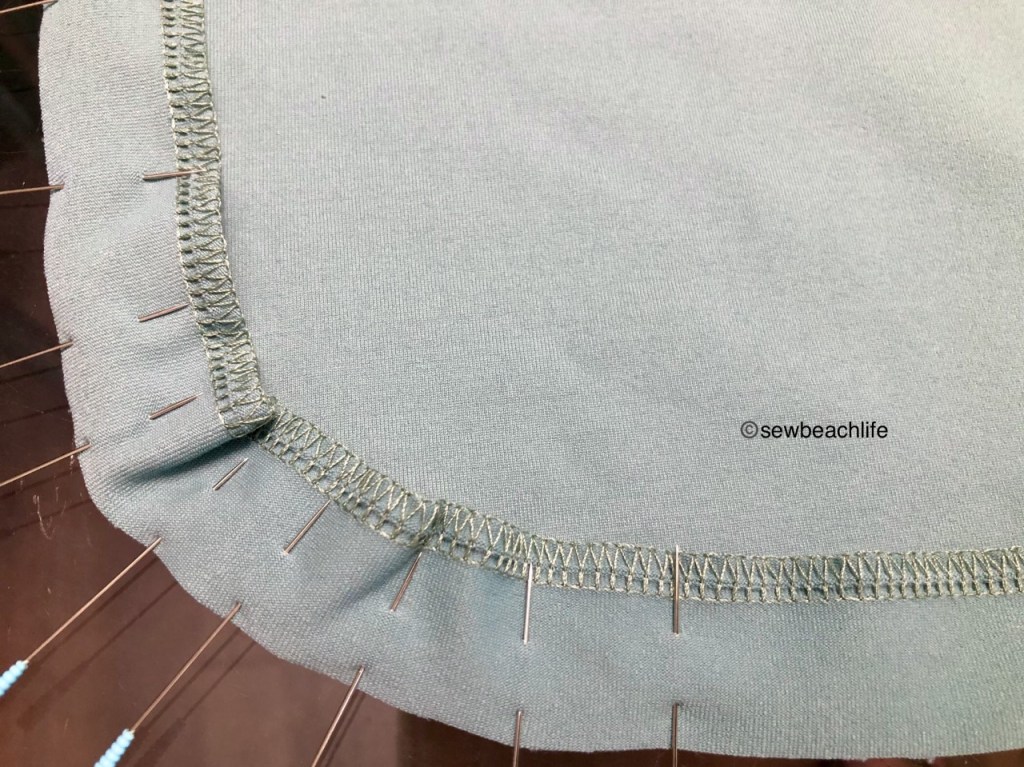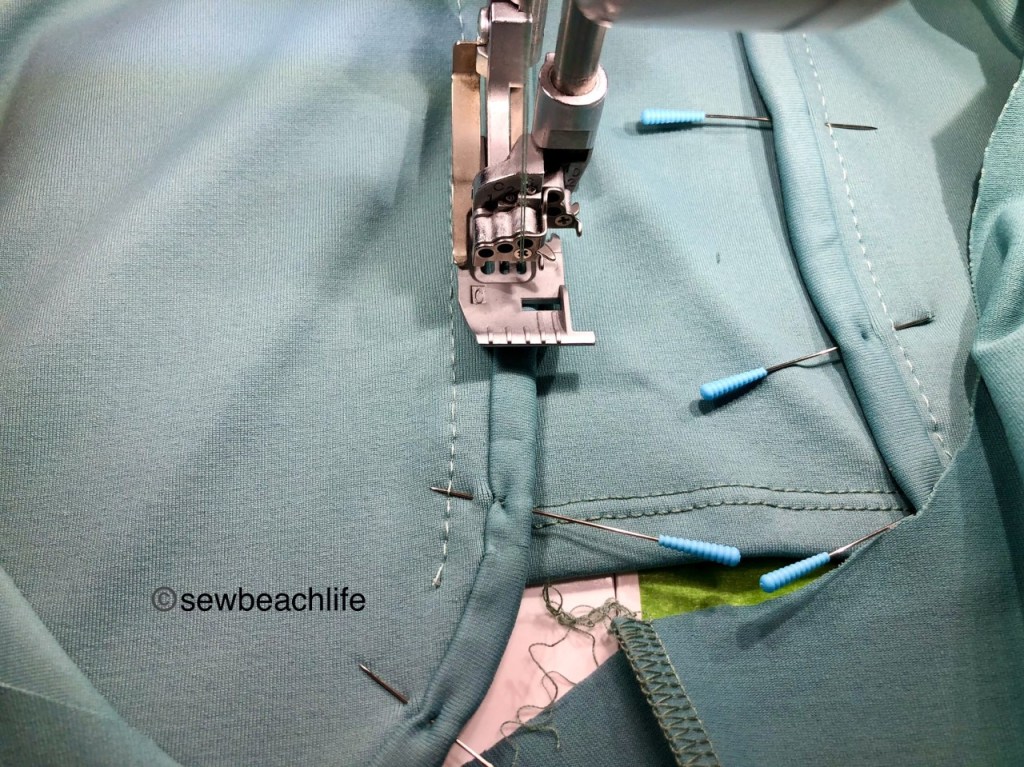The new Savannah Dress pattern is so cute! I love that it has so many options: a fitted look (with or without a center back seam for extra shaping!); a half or full circle skirt; narrow or wide straps that can be sewn as straight, crossed or in a V; an optional shelf bra, with a full bust option; and an optional removable bra cup panel.
I don’t normally wear fitted dresses, but this one intrigued me. I’m super glad that I’ve made a couple because they are comfortable and perfect for the sunny weather here in Florida.
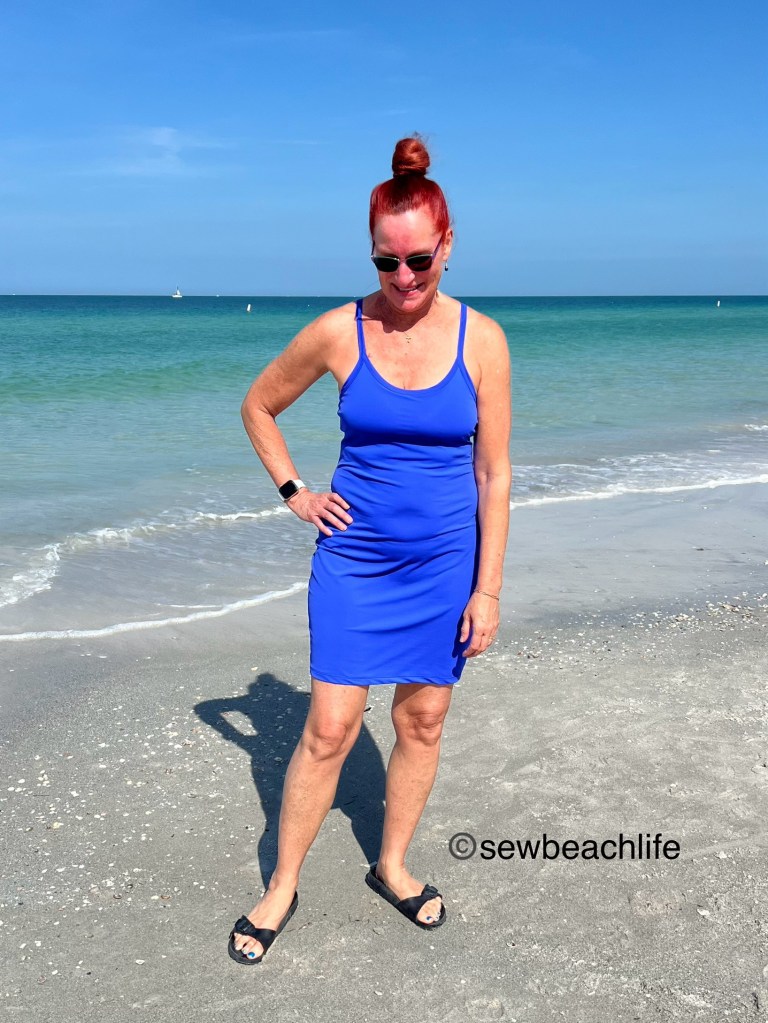
I chose the straight skirt option for both of my dresses and made the optional shelf bra (because who wants to deal with a strapless bra?) with crossed straps. The first dress had the one piece back, but several pattern testers thought that perhaps a seamed back would better fit and accentuate our curves. The designers made that option happen, and I like it!
Have I mentioned how much I love well-drafted patterns, and designers who work hard to try and make a great fitting pattern? Probably several times now! It really does make a difference in your sewing success when you use a well-drafted and tested pattern, and grade to fit your body.

Speaking of grading, always start by taking fresh measurements of your upper and full bust, waist, and hip, and reference the size chart before printing your pattern. Use the layers function when you print, and print just the size(s) you need. You may want to print a size larger and/or smaller if you’re on the edge of a size range. My upper bust measurement puts me in a size E, with my waist and hips falling into size G. So that’s how I graded the dress, and made the shelf bra in size E.
I didn’t use powernet in the shelf bra of the purple dress, but I did add the optional bra cup panel in case I ever want to add cups. It’s pretty supportive, even without powernet. This purple nylon spandex tricot was purchased at Phee Fabrics, and I love the happy color!

The center back seam really does add nice shaping if you have a curvy booty, or sway back. It also seemed to save on fabric, because I was able to fit my blue dress on one yard of 60″ fabric. If you’ve followed my blog or noticed my comments on sewing pages, I am all about playing fabric tetris to use the least amount of fabric possible, because I love high quality fabric. The beautiful blue nylon spandex fabric was purchased from Porcelynne.

I decided to use powernet as the optional bra cup layer on the shelf bra of the blue dress. I probably should have used a layer on the shelf bra back too for a little bit of smoothing, but whatever! Hopefully people are looking at my back muscles from twenty plus years of yoga rather than the back fat. 😉

Did I mention that the dress has multiple length options? I cut on the shortest length line, adding 1″ to the length because I am tall. The longer lengths hit below knee, which isn’t my thing on this style of dress. The circle skirt pattern pieces are formatted so that you can easily choose the length you want. Super helpful, because when I make the half circle skirt version, I’ll make it a bit longer than this.

Do you want to hear something amusing? My husband and I walk along a busy road to the beach to get photos. It is spring break season, and traffic is heavy. First, I got whistled at while walking. Hahahahahaha! And on the way back, a young gentleman leaned out the window of a passing car making, lets call them complementary comments on my appearance. Oh my! I mean, obviously my husband thinks the dresses are “hot” and loves it when I wear them. But it cracks me up when a (much) younger dude still thinks I’ve got it! 🙂
Making a pattern that fits your style and body not only looks flattering, but gives you that extra boost of confidence to really enjoy wearing what you make.
The details:
Savannah Dress from GreenStyle, in sizes B-M (fits full bust sizes from 30″ to 61″, hips from 32″ to 62″)
Blue nylon spandex (and possibly the powernet) from Porcelynne.
Purple nylon spandex (and possibly the powernet) from Phee Fabrics.
1″ wide knit elastic (used in shelf bra) and clear elastic (used in straps) from Wawak.
Thank you for reading and sharing my love of patterns, sewing, fabric, and creating practical, useful garments! ❤
The links to GreenStyle may be affiliate links (if I did them properly!) which means that I may earn a few pennies if you use my links without it costing you anything extra. Since this is my blog and represents me, I always give my honest opinion about any patterns, fabric, thread or supplies that I talk about. I don’t even bother to use aff links when I share on social media, so obviously it’s not a big deal to me whether you choose to use them. I do like knowing whether the time I spend writing posts actually interests people enough that they take a look at the patterns I review, but I write for me. It’s one more creative pursuit that I hope is helpful or interesting to others. I’m writing to share my love of sewing, not to make money! 🙂
